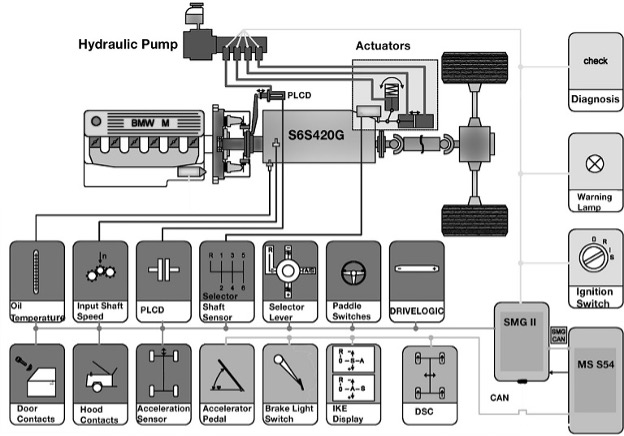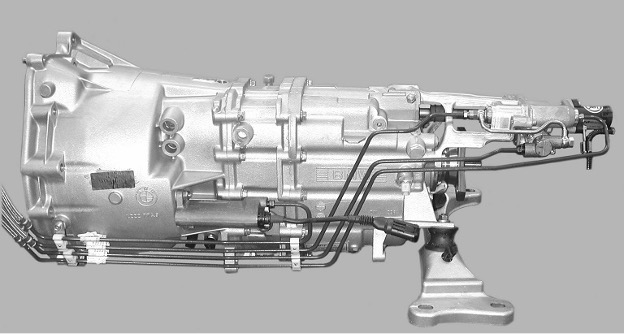In 1996, BMW introduced the M series manual transmission that allowed the driver to shift gears without the use of the clutch or mechanical shifter. The SMG (Sequential Manual Gearbox) system derived from Formula 1 racing technology.
The 2001 E46 M3 was the first U.S. vehicle to come with the 6-speed SMG transmission. This revolutionary gearbox allows you to shift manually for automated. The manual operation allows you to shift your vehicle by what’s commonly known as paddle shifters.
System Components
The SMG II system consists of the following components:
- Basic Gearbox (S6S420G, Getrag type D)
- SMG II Control Unit (Siemens)
- SMG CAN Bus
- DME Control Unit (MSS54)
- Hydraulic unit and solenoids
- Gearbox Actuator
- Clutch Slave Cylinder with PLCD (Permanent Linear Contactless displacement)
- Shift Lever Module with Shift Lock
- Steering Wheel Paddle mounted switches
- DRIVELOGIC Control
- Display in instrument cluster
- DSC control unit
- SAC dry single disc clutch

Not widely accepted
While revolutionary in design, the SMG transmission ruffled a few purists. Many BMW purists preferred the 3 peddle configuration (clutch, brake, gas). With the SME transmission, all shifting was done through the shifter paddles attached to the steering wheel. Many drivers felt manual was a better experience and funner.
Must drive experience
While when first introduced, many BMW owners scoffed at the new SMG transmission. Once they had a chance to drive with paddle shifters for a while, many changed their opinion of the SMG transmission. The paddle shifters allow for quicker shifting capability and allowed drivers to focus more on the road ahead of them. While revolutionary at the time, most modern manual sports cars today come with paddle shifters versus your traditional clutch peddle and manual shifter.
Advanced transmissions equal advanced problems
As with any technology, the SMG transmission did come with is faults. Common SMG M3 E46 transmission problems included faulty relay, faulty hydraulic pump / solenoid, SMG fault codes, actuator problems, shifting gears and leaking.
As BMW transmissions have evolved and become more complex, its more important than ever to take your vehicle to a top BMW repair facility such as Bay Diagnostic who for 37 years had repaired and services BMW’s in Brooklyn.

 1717 Gravesend Neck Road,
1717 Gravesend Neck Road,



